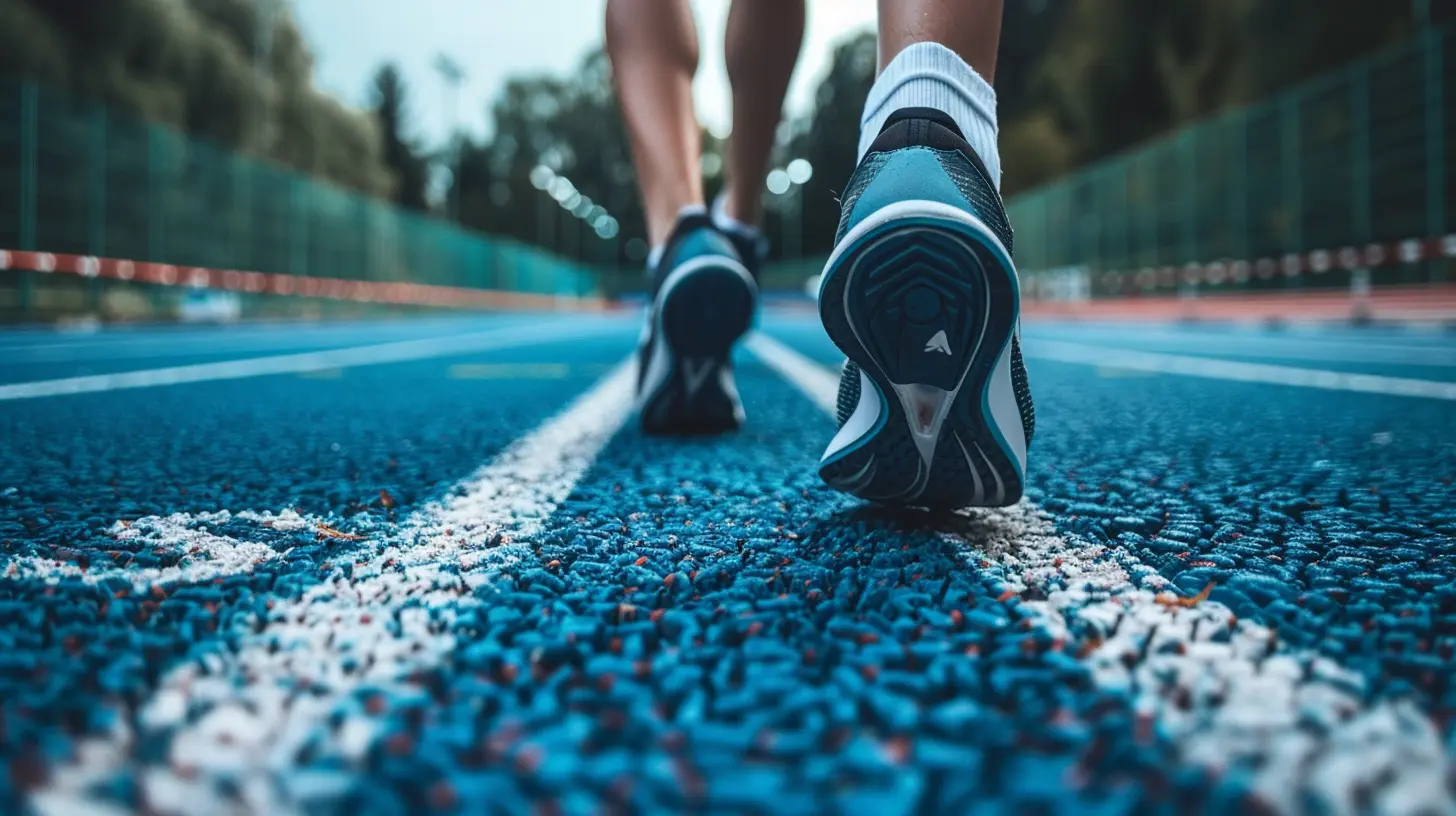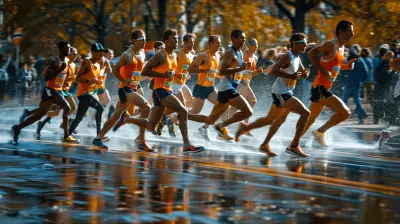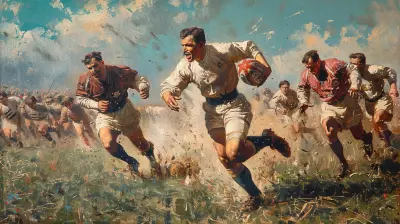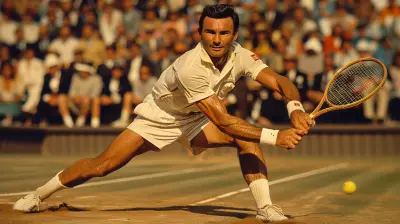3 January 2025
Who doesn’t want to run faster? Whether you're an experienced runner or just getting started, there's always room for improvement. Running isn't just about putting one foot in front of the other; it's about strategy, technique, and training. If you're ready to pick up the pace and leave your previous personal records in the dust, you've come to the right place.
In this article, we'll dive into the most effective speed training techniques that can help you run faster. From proper form to the right exercises, we'll cover everything you need to know. So, lace up your shoes because we're about to get moving!

Why Speed Matters in Running
Before we jump into the how, let's talk about the why. Why should you care about speed? Well, speed isn't just for sprinters or elite athletes. Even if you're a casual runner, improving your speed can:- Boost endurance: Running faster trains your muscles and cardiovascular system to work more efficiently.
- Reduce injury risk: Believe it or not, improving your speed and technique can help prevent common running injuries by enhancing your form.
- Make running more fun: There's something incredibly satisfying about knowing you can push your limits and see measurable progress.
Now that you're convinced, let's get into the nitty-gritty of how to run faster.

1. Perfect Your Running Form
The foundation of any speed improvement is proper running form. Think of it as the blueprint for your house—if the foundation is shaky, the whole structure could collapse. To run faster, you need to make sure you're running efficiently.Posture Is Key
Good posture is one of the most important things you can do to improve your speed. Keep your back straight, your shoulders relaxed, and your arms swinging naturally. Imagine a string pulling you up from the top of your head, keeping everything aligned. Slouching or leaning too far forward can slow you down and waste energy.Arm Movement
Believe it or not, your arms play a significant role in how fast you run. Your arms act as a counterbalance to your legs, and the faster your arms move, the faster your legs will follow.- Keep your elbows bent at about 90 degrees.
- Swing your arms forward and back, not across your body.
- Keep your hands relaxed, almost like you're holding a potato chip that you don’t want to crush.
Foot Placement
Where your foot lands during each stride can significantly impact your speed. A common mistake is heel striking, where your heel is the first part of your foot to hit the ground. This can act like a brake, slowing you down.Instead, aim for a midfoot strike, where the middle of your foot lands on the ground first. This can help increase your speed and reduce the risk of injury. Also, try to keep your strides quick and short, as overstriding can waste energy.

2. Incorporate Speed Workouts
Now that you’ve got the form down, it’s time to add some speed workouts to your routine. These workouts are designed to improve both your speed and your endurance.Interval Training
Interval training is one of the most effective ways to get faster. It involves alternating between periods of high-intensity running and lower-intensity recovery jogs or walks. This type of training helps improve your aerobic and anaerobic capacity, making it easier to maintain a faster pace over time.For example, try the 4x400 meter workout:
1. Run 400 meters (about a quarter-mile) at a fast pace.
2. Jog or walk for 1–2 minutes to recover.
3. Repeat this cycle four times.
Fartlek Training
Don’t be thrown off by the funny name—fartlek is Swedish for “speed play,” and it's a great way to incorporate more speed into your runs without feeling like you're stuck on a track.In a fartlek workout, you alternate between fast and slow paces, but the intervals are less structured than in traditional interval training. You can sprint to a tree, slow down to a jog for a few minutes, then pick up the pace again. This keeps things interesting and helps your body adapt to different speeds.
Tempo Runs
Tempo runs are another essential tool for improving speed. These runs are done at a "comfortably hard" pace—faster than a jog but slower than an all-out sprint. The goal is to maintain a steady pace for an extended period, usually between 20 to 40 minutes.Tempo runs help you build the stamina needed to sustain faster speeds over longer distances. Think of it as pushing your comfort zone gradually.

3. Strength Training for Speed
You might think that running alone is enough to make you faster, but strength training is a game-changer. Strong muscles, particularly in your core and legs, can help you propel forward more efficiently.Focus on Your Core
A strong core helps maintain proper form and posture, which we already know is essential for speed. Core exercises like planks, Russian twists, and leg raises can increase your stability and power, allowing you to run faster with less effort.Leg Strength
Your legs do most of the heavy lifting when it comes to running, so it makes sense to strengthen them. Incorporate exercises like squats, lunges, and calf raises into your routine to build strength in your quads, hamstrings, and calves.Don’t forget about plyometrics—explosive exercises like box jumps and high knees. These exercises mimic the quick, powerful movements you need to sprint faster.
4. Improve Your Cadence
Cadence refers to the number of steps you take per minute while running. A higher cadence generally leads to a faster pace. Most elite runners have a cadence of around 180 steps per minute, but don’t worry if you’re not there yet.To improve your cadence, start by counting how many steps you take in 60 seconds while running at a comfortable pace. From there, aim to increase your steps by 5–10% over time. Shortening your stride and focusing on quick, light steps can help you improve your cadence and, ultimately, your speed.
5. Don't Forget Recovery
If you're serious about running faster, you can't ignore recovery. Your muscles need time to repair and rebuild after intense workouts. Skipping recovery can lead to fatigue, injury, and slower progress.Active Recovery
Active recovery involves light activities like walking, cycling, or swimming. These activities help increase blood flow and promote healing without putting too much strain on your muscles.Rest Days
Every runner needs at least one or two rest days per week. On these days, resist the urge to do any strenuous exercise. Your body needs complete rest to recover fully and come back stronger.Stretching and Foam Rolling
Taking time to stretch after your workouts can help improve flexibility and prevent injuries. Foam rolling is another great way to loosen tight muscles and speed up recovery.6. Nutrition for Speed
Fueling your body properly is just as important as training when it comes to running faster. Think of food as the fuel that powers your engine.Carbohydrates
Carbs are your primary energy source when running. Before a speed workout or race, focus on eating complex carbohydrates like oats, sweet potatoes, or whole grains. These foods provide long-lasting energy and help you maintain a faster pace.Protein
Protein is essential for repairing and building muscle after tough workouts. Make sure you're consuming enough protein from sources like lean meats, beans, or protein shakes to help your muscles recover and grow stronger.Hydration
Dehydration can slow you down more than you think. Aim to drink plenty of water throughout the day, and consider using sports drinks with electrolytes if you're doing intense speed workouts.7. The Power of Mental Toughness
Running faster isn’t just a physical challenge—it’s a mental one, too. Developing mental toughness can help you push through when the going gets tough.Visualization
Before your workouts or races, take a few moments to visualize yourself running fast and strong. Picture yourself crossing the finish line with a new personal best. Visualization can help boost your confidence and prepare you mentally for the challenge ahead.Set Goals
Setting specific, measurable goals can keep you motivated. Whether it’s shaving 30 seconds off your mile time or finishing a 5K faster than ever before, having a goal to work toward gives you something tangible to chase.Conclusion
Running faster isn’t just about pushing yourself harder—it’s about training smarter. By focusing on proper form, incorporating speed workouts, building strength, and taking care of your body through recovery and nutrition, you’ll be well on your way to reaching your speed goals. Remember, progress takes time, so be patient with yourself and enjoy the journey.Ready to lace up your shoes and hit the pavement? Let’s go!













Gabriel McDonald
Great tips! I love how you broke down the speed training techniques. It’s so inspiring to think that with the right methods, I can actually shave off those precious seconds from my runs. Can't wait to incorporate these into my routine! Keep up the amazing work!
February 11, 2025 at 1:12 PM